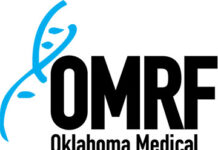
story by
James Coburn, Staff Writer
The decades-long shortage of registered nurses in the U.S. is no stranger to Oklahoma. Nursing shortages continue to affect every state, especially in the southwestern U.S.
According to the U.S Bureau of Labor Statistics, Oklahoma ranks 46th in the U.S. for nurses per capita with just 7.5 nurses per 1,000 residents. 2022 statistics indicate there were 30,320 RNs statewide. There are 9.22 nurses per 1,000 population in the U.S.
Nursing educators and working registered nurses have told Oklahoma’s Nursing Times for the past 25 years that not enough college educators, the COVID pandemic, an aging workforce, and employee burnout have contributed to the steady decline. More than half of RNs in the U.S. is over age 50.
Terry Meler-Flinn, RN, is in her 39th year of serving orthopedic patients at SSM Health Bone & Joint Hospital at St. Anthony. At 67, she has no plans of retirement. Flinn attributes her longevity to a perennial love of helping others, inspiring mentorship, and a freedom to grow by adapting to changes in the medical industry.
Additionally, 76 million baby boomers (people born between 1946-64) in the U.S., 29 percent off the population, challenge the nursing industry to respond to the growing needs of the aging population.
NRH Registered Nurse (RN) – Intensive Care Unit (ICU) – FT – Nights
There is also optimism mounting by policy makers at the University of Oklahoma College of Nursing. Programs are set to advance nursing practices in rural areas of the state and broader community. Enrollment is on the rise to filter nurses and partnerships.
A 2022 nursing workforce analysis in Health Affairs cited the number of registered nurses decreased nationally by more than 100,000 from 2020-21, which is a record over the past four decades.
The Advanced Practice Registered Nurse (APRN) workforce is expected to grow by 38 percent from 2022 through 2032. Approximately 29,200 new APRNs, are prepared to respond to a demand for primary and specialty care.
Another report by The Institute of Medicine stated patient safety will necessitate increasing the number of Bachelor of Science in nursing degrees by at least 80 percent. Currently, two-thirds of RNs are educated at the baccalaureate or graduate level.
In 2022 the Oklahoma State Senate and the House approved a measure addressing Oklahoma’s nursing shortage which worsened during the pandemic. Senate Bill 1458 has targeted $55 million of the state’s American Rescue Plan Act (ARPA) funds to establish grant programs to help 21 state colleges, universities, and technology centers.
State Sen. John Haste, R-Broken Arrow, co-chair of the Joint Committee on Pandemic Relief Funding, said these grants will help 21 institutions to expand their nursing programs, enabling the state to help meet crucial needs.
House Majority Floor Leader John Echols, R-Oklahoma City, was the House principal author of the measure.
“It’s absolutely critical we get more nurses into our health care facilities to help improve care and outcomes for Oklahomans,” Echols said.
“The dollars provided by this legislation will ensure more nurses are trained and ready to help address our current shortage,” he continued.
This year, the Biden administration mandated new staffing regulations for nursing homes.
• Facilities must provide a minimum total of 3.48 hours (3 hours and 29 minutes) of direct nursing care per resident, per day.
• The 3.48 requirement must include .55 hours (33 minutes) of care from a registered nurse per resident, per day and 2.45 hours (2 hours and 27 minutes) from a nurse aide per resident, per day.
• Facilities must have a registered nurse on site 24/7.
• Facilities must conduct a stronger annual facility assessment to improve the planning and identification of the resources needed to care for residents.
• Facilities must develop a staffing plan to maximize recruitment and retention.
Gov. Kevin Stitt has urged Biden to reconsider the mandate which Stitt stated would cause an economic hardship on the state’s nursing homes.
According to KOSU, this year the legislature directed the Oklahoma Health Care Authority to appropriate $30 million toward improving long-term care provider rates. That state investment will be matched with $61.4 million in federal funds. Facilities will see the following bumps pending agency approval.
• Nursing Homes: An average rate of $224.64 to an average rate of $244.78
• Regular intermediate care He also agreed that the Biden mandates are harmful.












